

Basque region of
Spain
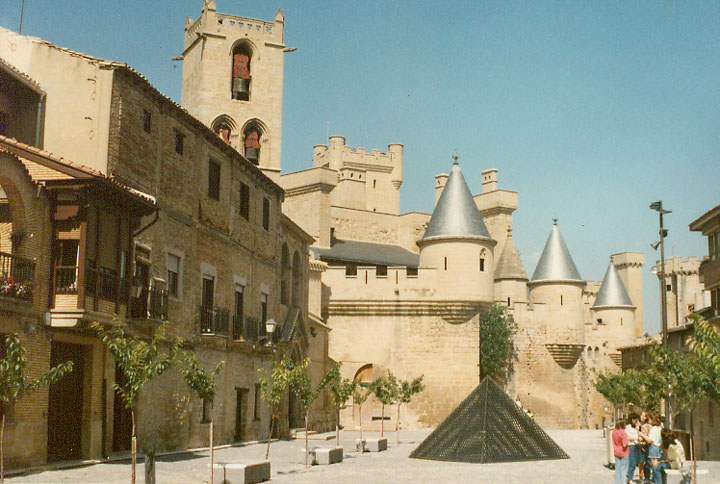
Navarrese Castle (castillo de Olite)
where the kings of Navarre once resided
(the autonomous region of Navarra is just East of the Basque area)
Basque Country (Spanish: País Vasco; Basque Euskadi), autonomous region in north central Spain, comprising the provinces of Álava, Guipúzcoa, and Vizcaya. The Basque Country is bounded by the autonomous regions of Navarra to the east, Cantabria to the west, and La Rioja and Castile-León to the south; and by the Bay of Biscay and France to the north. The total area of the Basque Country is 7261 sq km (2803 sq mi).
Text from Microsoft Encarta
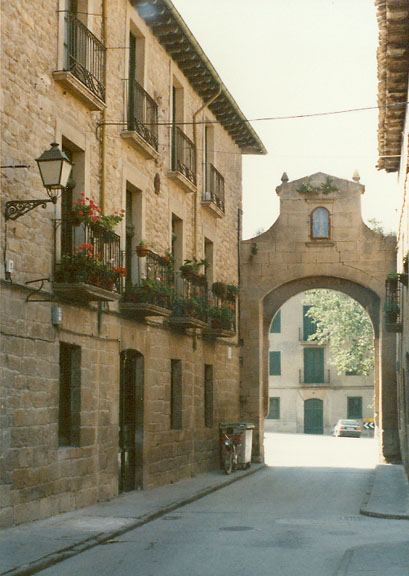
a street
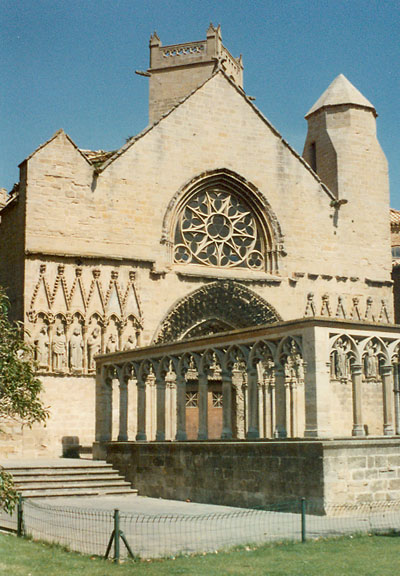
church on the Camino de Santiago
More Photos of the Camino de Santiago
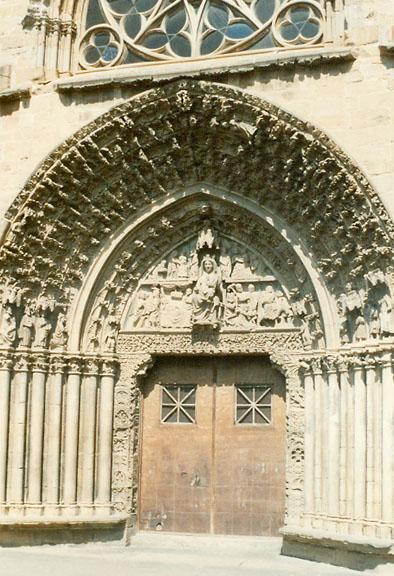
the facade
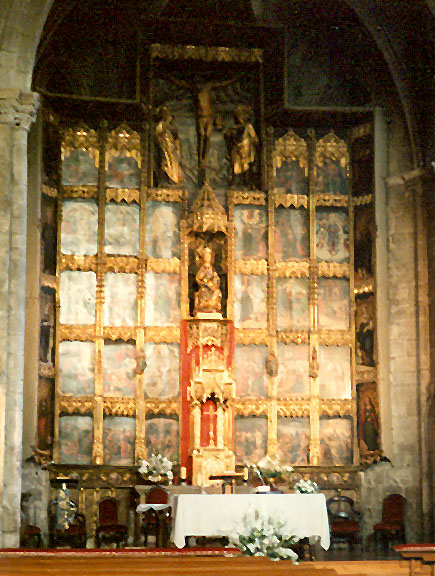
the altar

detail of mother and child
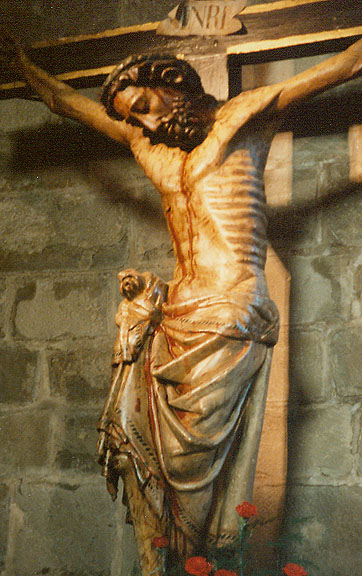
Christ on the cross
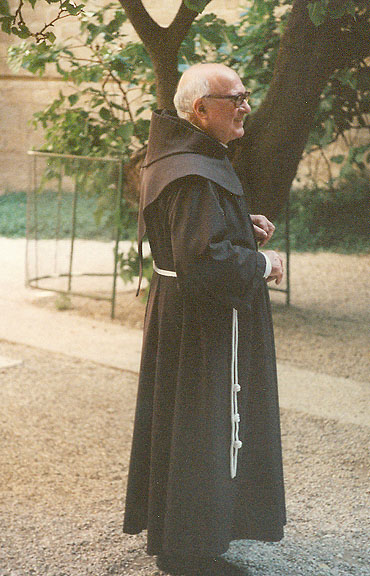
the priest
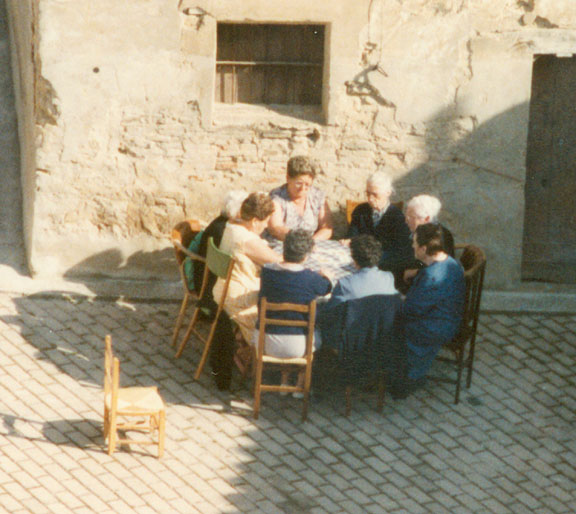
an intense game
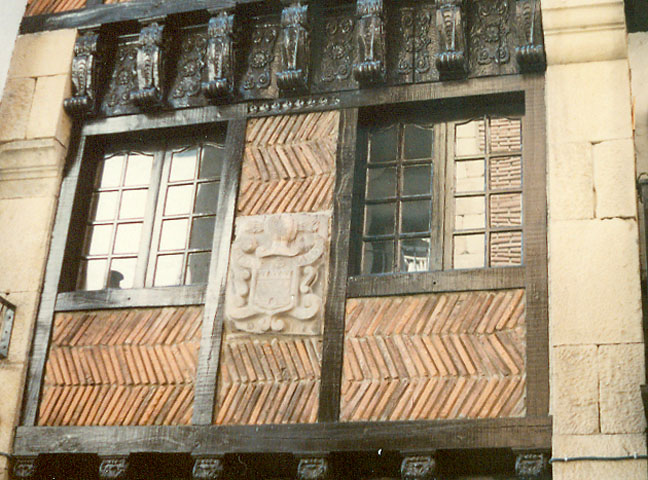
building detail
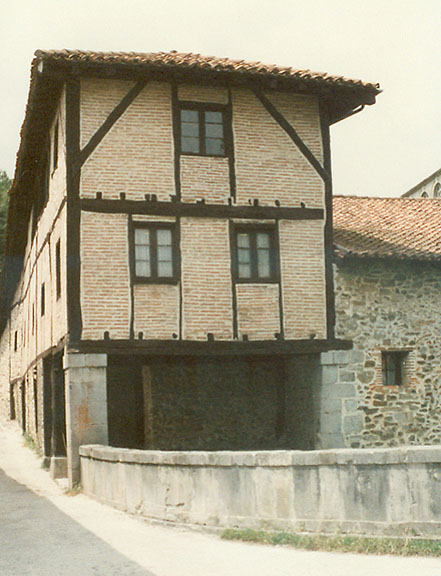
frame and brick construction
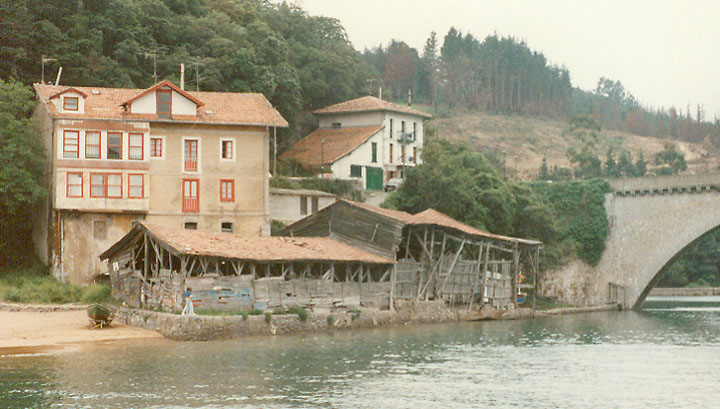
countryside
![]()
Vitoria
Vitoria-Gasteiz, founded towards the end of the
12th century, is today a city of exceptional urban design. The Basque capital
has a medieval city centre, in which it is possible to find countless places of
great traditional flavour, such as Plaza de la Virgen Blanca (White Virgin
Square), and historic buildings like the cathedral of Santa María. From here,
the city harmonically unfolds into the Romantic new suburbs, a network of wide
avenues, gardens, and buildings that are a reminder of the grandeur and
stateliness of Vitoria.
In addition, Vitoria enjoys an intense cultural life, as evidenced year after
year by its most renowned event: the Jazz Festival. Its traditional, delicious
recipes —based on fresh orchard products and always accompanied by a unique
Basque wine— will not disappoint.
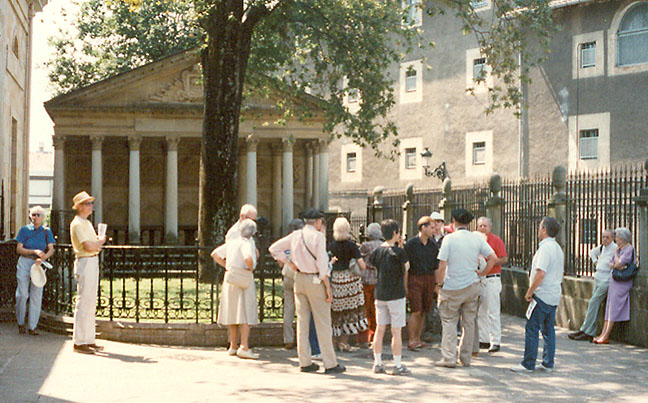
explaining the traditions of the Basque
Present day Vitoria was founded on a small hill
in 1181 by Navarrese King Sancho VI, under the name of Nueva Victoria. Later on,
in 1200, this fortified town went to the Castilian monarch Alfonso VIII. Soon, a
flourishing vocation for crafts began to emerge in the village. In the 15th
century, Juan II of Castile granted Vitoria the title of city. Through the 18th
and 19th centuries, the expansion of the city into the new suburbs took place.
The Basque capital reveals a medieval quarter where it is possible to find the
most charming little corners, gardens, and tree-lined boulevards, which make the
capital of Alava a remarkable green space that does not disturb the careful
urban layout, where medieval streets harmoniously intermingle with Renaissance
palaces, and Neoclassical churches. The nerve centre of the city is Plaza de la
Virgen Blanca (the White Virgen Square), presided over by the Battle of Vitoria
monument. It is also the site of the church of San Miguel, which houses the
image of the White Virgin, the city's patron saint. The present building dates
between the 14th and 16th centuries, as evidenced by the mixture of Gothic and
Renaissance elements. The church has a rectangular floor-plan, with three naves
crowned with flamboyant Gothic ribs, and a high reredos, made by Gregorio
Fernández.

at Vitoria, the capital of the Basque region of Spain
The Gothic portico of San Miguel leads to the
estate of Los Arquillos, an arcaded walk that connects the historic quarter with
the nineteenth-century suburbs. We are in front of the church of Saint Vincent,
and the Palace of Villa Suso (16th century), located in Plaza del Machete, place
where traditionally city-council officials were sworn in.
The cathedral of Santa María, also known as the Old Cathedral, was erected at
the highest part of the city. The construction of this magnificent Gothic temple
began in the 13th century, and continued into the 14th. Later remodelling was
done as the city grew. In 1496, the church became a collegiate church, until
finally, in 1861, it achieved the rank of cathedral. The imposing building,
declared Historic-Artistic Monument, has a pronounced Latin cross floor-plan,
crowned with ogive vaults, as well as a magnificent ambulatory. From the
exterior, we can see the monumental sculptures of the fourteenth-century main
front, very worthy of mention; the sculpture in the central front, is devoted to
the Virgin; the left front is dedicated to San Gil, while the right front
depicts the Last Judgement, and Santiago the Apostle.
The surrounding area of the cathedral holds the most ancient streets of the
city, as revealed by their guild names: "Cuchillería" (Cutlers), "Herrería"
(Blacksmiths), "Correría" (Couriers), etc. Taking a stroll around this area, we
will see the most significant Renaissance palaces in the capital. On Herrería
street we will find the Escoriaza-Esquibel palace, with its gorgeous plateresque
courtyard, as well as the Urbina Zárate palace; on Correría, we will admire the
Portalón (Large Doorway), the House of Maturana-Verástegui, and the Tower of
Anda; finally, on Cuchillería, we find the Palace of Bendaña (16th century), and
Casa del Cordón, declared Historic-Artistic Monument. This old trading house
from the Low Middle Ages, (built in the 15th century), has a Gothic façade with
two pointed arches. Before leaving the old quarter, admire the Palace of Floral
de Álava, home to the City Council, built in the 19th century, and the slender
Tower of Doña Otxanda, the present site of the Natural Science Museum. This
fortified structure, built in the 15th century on top of an older one, was
commissioned by Andrés Martínez de Iruña, and Catalina de Álava. The New Suburbs
Around the historic quarter, the rationalist Vitoria, the Vitoria of the
nineteenth-century expansion, unfolds. In the new suburbs that arose as a
consequence of this expansion, we find the square Plaza de los Fueros , designed
by the prestigious Basque artist Eduardo Chillida during the '80s. Further ahead
we will find the cathedral of María Inmaculada, also known as New Cathedral,
built in the early 20th century, following a Neogothic style. Next to the
temple, we will see the Basque Parliament (19th century), the site of the
present autonomous parliament.
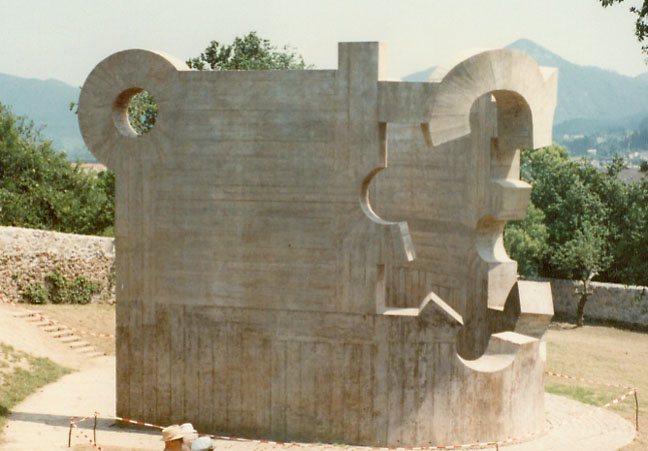
Both buildings flank the gates to the central
Florida Park, one of the most emblematic in the city. It was built back in 1820,
and it is remarkable for the wide variety of plant species that it houses. Other
green spaces found in the capital include the Judizmendi Park, situated on top
of an old Jewish cemetery, and the San Juan de Arriaga Park, the largest in the
city. Among the many small palaces in this Romantic city, it is well worth it to
stop before the Augusti Palace, home to the Museum of Fine Arts. This eclectic
building, built in 1912, has been declared Historic-Artistic Monument. The
Palace of Ajuria Enea, also from the beginning of the 20th century, is a clear
example of Basque stately architecture, and it is presently the site of the
Basque Government.
Vitoria enjoys an intense cultural life. Its extensive musical tradition shows
at the Vitoria Jazz Festival. Each year in July, internationally acclaimed
musicians bring the most varied styles to the Basque capital, brightening the
streets of Vitoria for a week. A perfect excuse to come and discover the charm
of the capital of Alava.
The Parador de Argómaniz (Argomaniz Inn), a majestic Renaissance palace, is
located only 12 kilometres away from Vitoria-Gasteiz. There you can sample some
of the most typical dishes of the region, such as the perretxikos (a kind of
mushroom), the snails with sauce, and the goxua (a sponge cake with whipped
cream and caramel). The Vitoria-style beans (habas a la vitoriana), the
vegetable stew (menestra de verduras), the fried peppers (fritada de pimientos),
and the white haricot bean stew (alubias pochas) are some of the specialities
that make up this rich, traditional cuisine. The region of Rioja Alavesa
produces excellent wines, which are included in the Designation of Origin -
Rioja.
The Pilgrim's Road to Santiago de Compostela has left a particular artistic mark
in the province. The Zalduondo country house, home to the Ethnographic Museum,
is the first stop of the pilgrimage in Alavan territory. In this town we can
admire the Lazarraga Renaissance palace, and the parish church. Erected in the
vicinity of Eguilaz, the Dolmen of Aizkomendi is one of the megalithic compounds
of the Basque Country. The journey continues to Salvatierra, a medieval village
with remains of the old wall, and large Renaissance houses; worthy of mention
are the churches of San Juan and Santa María. Upon reaching Alegría and
Vitoria-Gasteiz, the path continues to Domingo de la Calzada, in the Rioja
territory.
The natural heritage of Álava is tremendously diverse. This fact is proven by
the amount of protected spaces that it has, among which it is worth mentioning
the Valderejo Nature Reserves, to the west of the province, the Izki Nature
Reserve, which preserves one of the most extensive melojo-oak forests, and the
Área de Gorbeia Nature Reserve, located at the boundary between the and Biscay,
considered to be one of the biggest natural tourist attractions in the Basque
Country.
Text from Microsoft Encarta
![]()
Bilbao
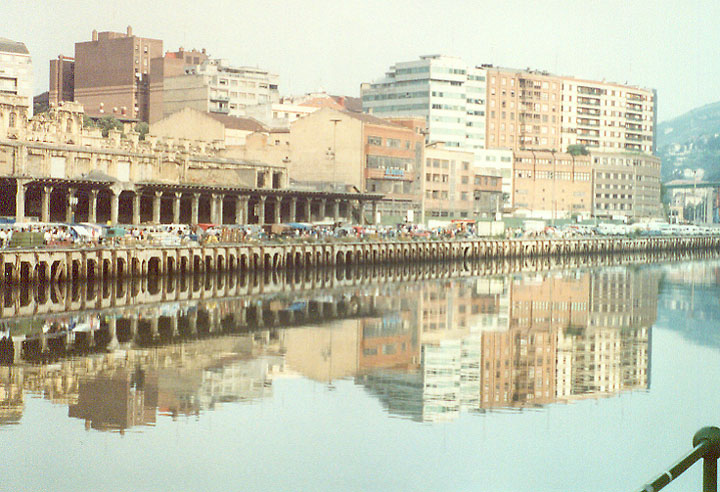
on the Nervión River
Bilbao, city and seaport in northern Spain, on the Nervión River, near the Bay of Biscay, capital of Vizcaya Province, in the Basque Country autonomous region. Bilbao consists of an old section, on the right bank of the Nervión, and a modern section, dating from the late 19th century, on the left bank. Several bridges connect the old and new sections. Several railroads and highways and an international airport serve Bilbao. A subway system opened in 1995. One of the major industrial centers of Spain, the city is within a large iron-ore mining region. The chief industries are shipbuilding and the manufacture of cement, chemicals, foodstuffs, iron and steel, machinery, paper, and textiles. Bilbao is an important seaport, and iron ore, cereal grains, and wine are major exports. The chief imports are coal and timber. The Semana Grande is a major bullfighting event held in Bilbao each August.
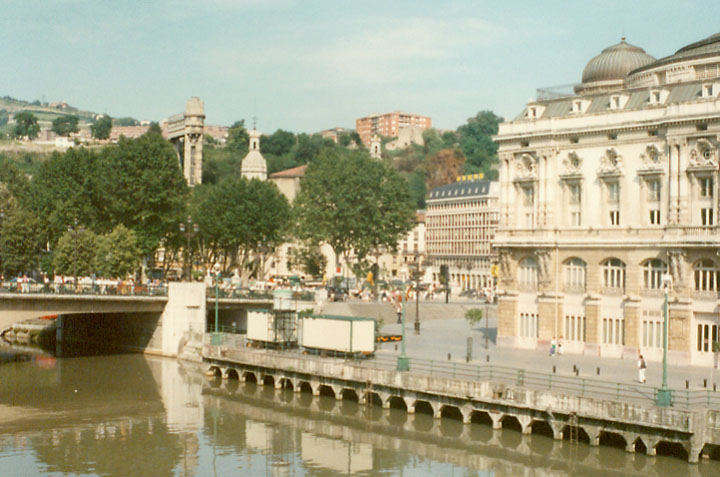
The city has several churches, among them the Gothic Church of Santiago, which
dates from the 14th century. It also has a number of museums, including a
collection of archaeological finds relating to the history of the Basques. In
October 1997 the Guggenheim Museum Bilbao, with its collection of modern art,
opened on Bilbao's waterfront. Among the city's educational institutions is the
University of Deusto, a Jesuit university founded in 1886. The author and
philosopher Miguel de Unamuno y Jugo was born in Bilbao.

seaport
Founded in 1300, Bilbao swiftly became one of the leading seaports of Spain. The fortunes of the city declined during the 17th and 18th centuries. In the 19th century the demand for iron ore and steel throughout Europe led to renewed industrial growth in Bilbao. The city withstood two great sieges by the Carlists from 1835 to 1836 and in 1874. During the Spanish Civil War (1936-1939), Bilbao was the capital of a previous, short-lived autonomous state of the Basques that was under Loyalist control. The old section of Bilbao was severely damaged by a flood in 1983, but has since been restored. Population (1998 estimate) 358,467.
Text from Microsoft Encarta

serious conversation
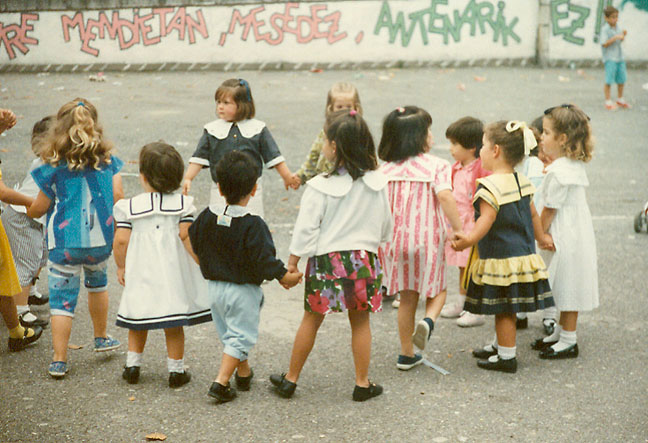
children at play
![]()